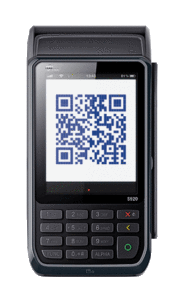
436,000 Chinese tourists visited New Zealand in the 12-months to February – more than any country bar Australia. Chinese are also our primary source of international students and one of our largest migrant groups. Yet whilst they are very important, Chinese consumers remain largely misunderstood by many New Zealand businesses, who stand to benefit by better servicing their needs.
Making just a few simple tweaks to align with how Chinese prefer to purchase products is an easy way to grow both sales and advocacy.
For anyone who has visited China since 2016, the prevalence of mobile payments is likely to have stunned them. Chinese consumers now spend 90 times more on their smartphones than Americans according to Forrester Research. Everything from restaurants, to clothes, to hotels, to borrowing a bike is paid for with the simple scan of a QR code in a payment app – a different process than contactless payments at home. A year ago, mobile payments accounted for 45% of purchases in McDonalds’ 2,400 China restaurants, and usage has soared since. There are vendors who no longer accept cash and cards anymore and even beggars have a personal QR code handy for passers-by.
As recently as 2010, China was predominantly a cash-based society. It was not uncommon for Chinese to stow stacks of red bills under the mattress as they had little trust or patience for the banking system. Credit card companies worked hard to change this by providing countless incentives to lure consumers onto plastic, yet just 15-20% have ever signed up. The majority of consumers leapfrogged credit cards to go straight to the much more convenient and widely accepted mobile payment apps.
Over the past 18 months, China’s mobile payments phenomenon has expanded beyond Mainland China to such an extent that Chinese tourists are increasingly expecting its availability abroad. This is being driven by local apps Alipay and WeChat Pay who together account for over 93% of China’s mobile payments and have enabled overseas payments for their 520 and 800 million respective active monthly users in 2017. Just in the US, Alipay is accepted in more than 170,000 retail, hospitality, leisure and transportation locations. If you jump in a cab in Vegas you can pay for it with Alipay, you can cover dinner, the show and even that striking outfit you wore – all purchased through Alipay.
Yet even with the explosive growth of Chinese mobile payments abroad, it continues to be the area most in need of improvement in overseas markets, according to a Hotels.com survey of Chinese travellers.
Payment methods is the top-equal factor influencing Chinese travellers’ purchasing decisions overseas – more important than price according to Nielsen. This is supported by an iResearch Global study which found 67% of all Chinese tourists say they prefer to use mobile payments when travelling. The same study found they are four times more likely to buy if QR payment is an option, when compared to credit card and cash.

The 436,000 Chinese tourists who visited New Zealand over the past year spent two and a half times more than Australian tourists per trip and 20% more than Americans. Chinese tourists’ high spending isn’t just from splashing out on hotels, dinners and tourist attractions, but also buying much sought-after NZ and international products to fill their suitcases for themselves, family and friends who don’t trust the products in the mainland.
For many Chinese tourists, students and migrants, the Alipay or WeChat Pay logo is a familiar beacon, an accreditation that shows a business cares about them, and is servicing their needs. It helps the feel-good factor that not only increases their willingness to spend, but also advocacy of a business.
Chinese consumers’ inherent lack of trust means they spend more time reading reviews and asking their networks about products and services than any other consumer in the world. 42% of online luxury travel reviews globally are from Chinese. A positive experience starting from something as simple as a smartphone payment can snowball into many more Chinese customers who have seen a review or a social media post about your business – particularly from a Chinese influencer. Just ask the makers of Lavender Bears in Tasmania or the Regency Seafood fish and chip shop in Brighton, England.
Of all the things you can do to help Chinese sales, accepting payments is arguably the quickest win. We are fortunate in New Zealand that through Smartpay you can integrate Chinese payments into compatible point of sale systems with a simple update to your terminal software. The seamless integration allows businesses to accept Chinese mobile payments with a QR code to scan, providing a very similar experience to how Chinese pay in their homeland. Visitors will even have the ability to pay in CNY and see the transaction in Chinese. With no fixed terms and merchant fees lower than equivalent payments with credit cards, it seems like a no brainer.
Smartpay’s simple and seamless QR payment solution makes it easy for you to take QR code payments on your Smartpay Terminal. There’s no sign up cost and no minimum term. Learn more about adding Alipay and WeChat Pay to your EFTPOS terminals.